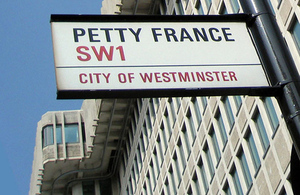
- strategy outlines the government's approach to tackling drugs in prisons
- millions being invested in security to stop drugs getting through the prison gates
- drugs fuel violence and prevent rehabilitation of offenders
The Prison Drugs Strategy outlines the co-ordinated response needed to deal with the scourge of drugs which are fuelling record levels of violence.
It is centred around 3 objectives - restricting supply, reducing demand and building recovery. The overall aim is to reduce drug misuse in prisons, thereby better protecting staff and prisoners and creating conditions for offenders to turn their lives around.
The publication of the strategy follows the investment of an additional £70 million over the past year in prison safety, security and decency. This includes a number of measures to tackle drug supply, such as security scanners, improved searching techniques, phone-blocking technology and a financial crime unit to target the criminal kingpins operating in prisons.
Prisons Minister Rory Stewart said:
The threat drugs pose to the safety of prisons has never been greater and it requires a wide-ranging response.
The Prison Drugs Strategy sets a clear direction for all those involved in reducing the impact of drugs in our jails.
The potential benefits of this are huge, not only in the form of improved safety for officers and prisoners, but also in reduced re-offending and greater public safety.
The strategy has been developed by the Ministry of Justice (MOJ) and Her Majesty's Prison and Probation Service (HMPPS), working with other partners across government.
The central elements of the strategy are:
- Restricting the supply of drugs by improving security, building intelligence, and targeting the criminal networks which aim to bring drugs into prison.
- Reducing the demand for drugs in prison by developing more meaningful regimes, providing more constructive ways for prisoners to spend their time and ensuring the balance of incentives encourages prisoners to make the right choices.
- Working closely with health and justice partners to build recovery for prisoners who want to overcome their substance misuse, providing prisoners who are serious about living substance free with the environment to do so successfully.
The document will be used by prisons to help inform their own local drugs strategies, which are due to be completed across the estate by September this year.
One example of effective partnership work is the Drug Recovery Prison pilot at HMP Holme House, where the MOJ is working with the Department of Health and Social Care and NHS England to test and evaluate innovative approaches to tackling drugs and helping prisoners improve their chances of recovery.






